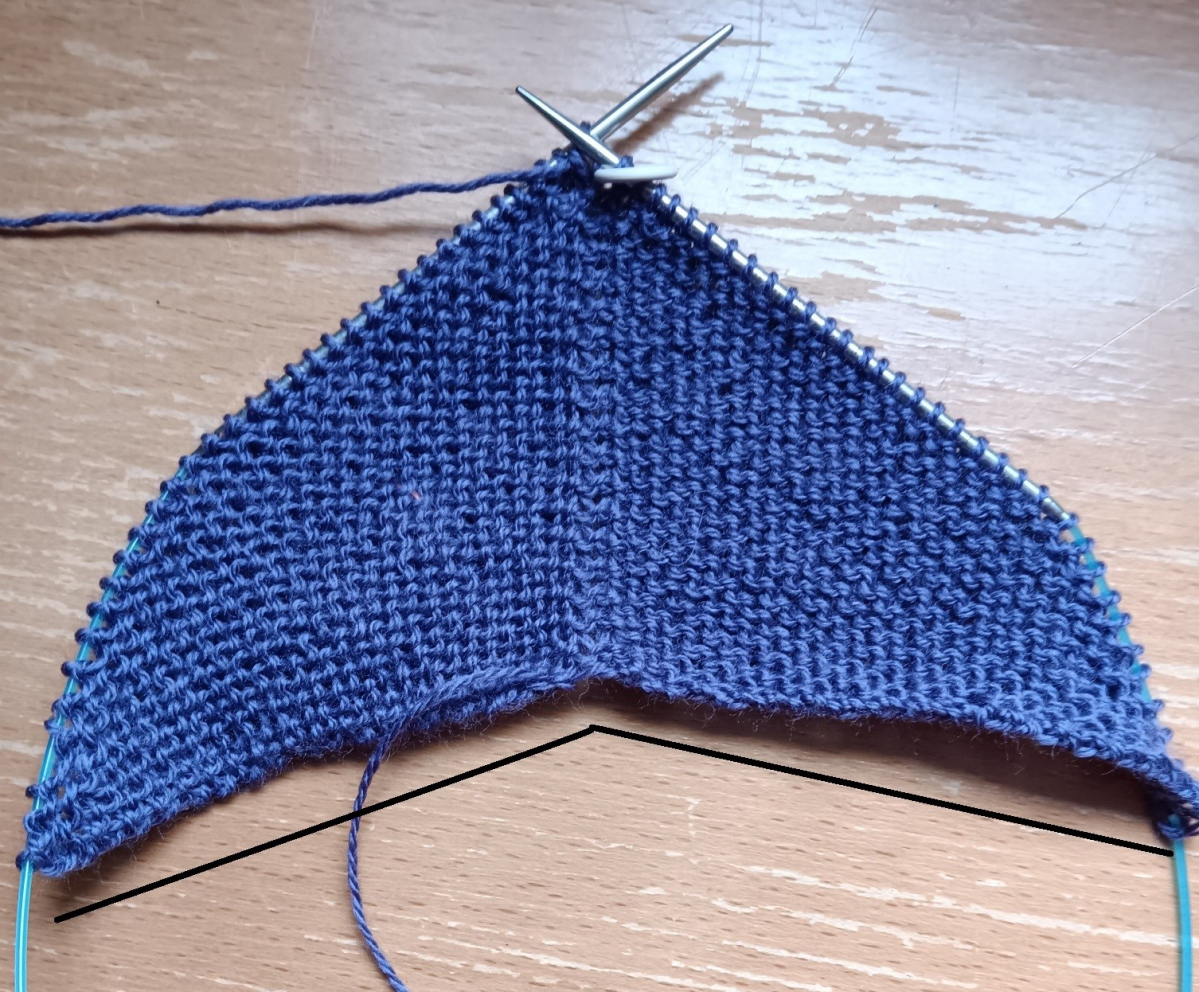After finishing a large project, what do you do?
Walk away from knitting for a bit? No, no, no, of course not. You cast on something else.
I was thinking about a small project, but what jumped onto my needle was a shawl. Not a small project, sigh.
It wasn’t actually as straightforward as that. I had some navy, hand-dyed sock wool and cast on for socks. A small project, at least small in size, to carry around.
The yarn had cashmere in it, and after I knit the cuff, I thought maybe cashmere is sort of wasted on socks, so I ripped it out and here I am.
This is the Magic Symmetry Shawl, knit starting at the side with 3 stitches with increases worked on the leading edge.

This usually makes an asymmetric shape, but this is going to be symmetrical when it’s done, wider than it is tall. To my mind this makes it so much easier to wear.

I figured out a new stitch to add to the pattern. Doesn’t this show off the contrast colour?


I thought I would knit eyelets in the contrast colour rows. I worked [Yo, K2tog] and found I liked the wrong side better. So now I knit the right side row and on the wrong side row work [Yo, P2tog]. So happy with how this looks.

It’s not such a large project after all.
Cheers Deb





































